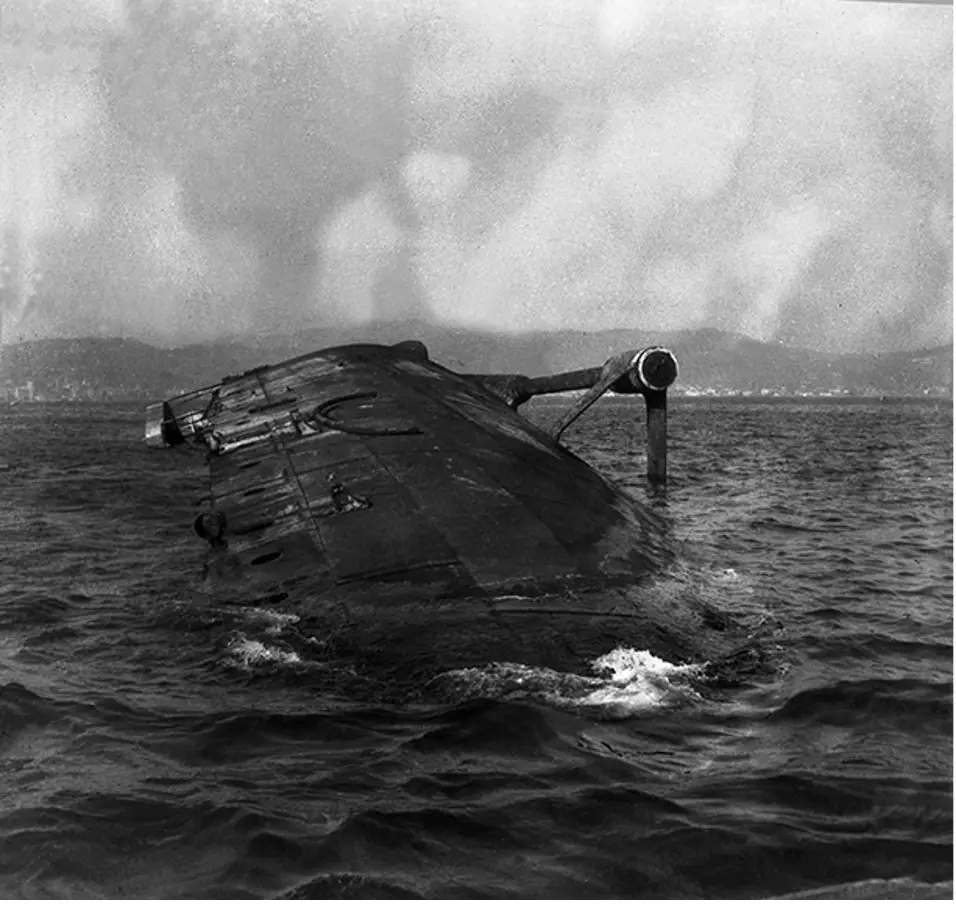Context
After the armistice between Italy and the allies of September 1943, what remained of the Italian armed forces started to cooperate with the Allies in what has been called “the co-belligerent period”. The army and the air force did their part and so did the navy. One speciality of the Regia Marina which was particularly admired by the Allies was the use of commando frogmen utilizing various “assault devices” (Mezzi d’assalto in Italian), such as the explosive motorboats and the human torpedoes.
The British copied the Italian Human torpedo design creating the so-called “Charriot” and tried to further develop this speciality (think about the X-craft midget submarines attacking the Tirpitz).
The co-belligerent Regia Marina re-organized its commando frogmen force into a new unit called MARIASSALTO. This unit was put together with several former officers of the X°M.A.S. flotilla, including Luigi Durand de la Penne, one of the frogmen that participated in the Alexandria raid.
Before the end of the war, the two former enemies had the chance to work together and carry out two joint operations against the common enemy.
Operation QWZ
In early 1944, the Royal Navy and the co-belligerent Regia Marina launched an operation against the port of La Spezia, aimed at sinking the heavy cruisers Bolzano and Gorizia. These units were no threat to the allies but could still be used by the Germans to block the harbour and sabotage the naval base.
On the night of the 21st of June 1944, the destroyer Grecale and the Motor-torpedo-boat 74 (MS 74) left the port of Bastia (Corsica). The Grecale carried a small group of Italian frogmen, equipped with explosives. The MS74 carried two British chariots. Once the formation reached the coast of Tuscany, the Grecale released two M.T.S.M. boats carrying the Italian frogmen led by Luigi Durand de la Penne.
The two boats and the MS74 proceeded towards La Spezia and halted near the port obstructions to release the attacking groups. The two British “chariots” headed for the cruisers. Petty officers C. Bercy and W. Laurence could not reach their target since their human torpedo suffered a mechanical failure and was abandoned. Sub. Lieut. M.R. Causer and Seaman H. Smith reached the Bolzano and successfully planted their warhead. The Italian frogmen (Francesco Berlingeri, Andrea de Angeli and Corrado Giani) were tasked to attack secondary targets like submarines and other vessels but could not find any of them. The Italians, together with Petty Officer Bercy, managed to come ashore and joined partisan groups while the other three British frogmen were captured. The warhead under the Bolzano exploded and the cruiser rolled over and sunk in the harbour.

The Bolzano sunk in La Spezia

The Gorizia semi-sunk in La Spezia
Operation “Toast”
A second joint operation was launched at the end of the war, this time targeting the unfinished aircraft carrier Aquila, anchored in Genova. The objective was the same, stopping the Germans to use the huge hull of the ship to block the harbour. On the 18th of April 1945, the destroyer Legionario and the MS74 began their approach to Genova, escorted by the British gunboat MGB 177. This time the attacking party was formed only by Italians, manning two British chariots handed over by the Royal Navy. Around 23:30, the frogmen Nicola Conte, Evelino Marcolini, Girolamo Manisco and Dino Varino headed for their target. One of the two “chariots” suffered once again from mechanical failure and was abandoned. The other one reached the Aquila, but the two operators could not attach the warhead to the hull instead they placed it on the sea bottom right below the Aquila. The four men were recovered by the M.T.S.M. waiting in the dark at the entrance of the harbour. This was the only operation during WW2 in which Italian frogmen were immediately recovered after the action. The warhead beneath the Aquila exploded but caused no serious damage. Although the ship was mined by the Germans, the Allies found it untouched at its anchorage when they liberated Genova a week later.

The aircraft carrier Aquila
Sources
Bagnasco, E. (2015). I mezzi d’assalto Italiani 1940-1945 (Parte I).
Giorgerini, G. (2007). Attacco dal mare, storia dei mezzi d’assalto della marina italiana.
